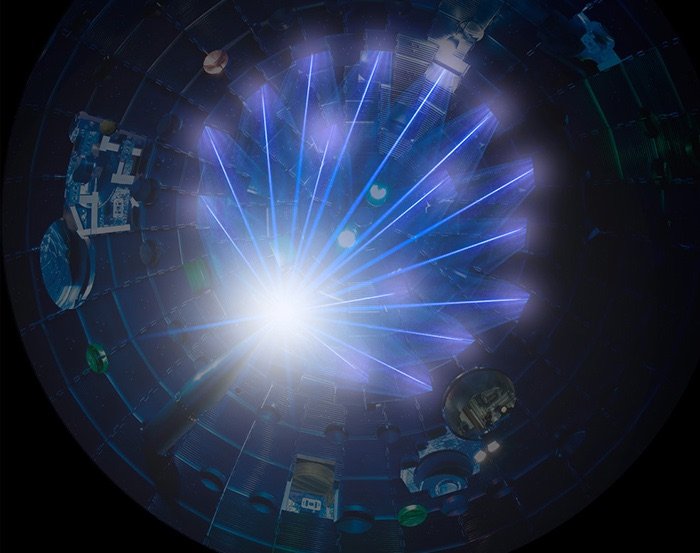New research by a team of physicists with Lawrence Livermore National Laboratory’s National Ignition Facility (NIF) seems to show ions behaving very differently during fusion reactions than current models predict, results that could have significant implications in the effort to produce sustained fusion ignition.
Among the studies currently being undertaken at the NIF are inertial confinement fusion experiments, which involve nuclear fusion reactions that are achieved through the heating and compression of tiny pellets known as “targets,” each of which contains a mixture of thermonuclear fuel consisting of equal parts deuterium 2H (around 10 milligrams) and tritium 3H. Such experiments carried out at the NIF are designed to ignite hydrogen plasmas and keep them burning, which produces energy resulting from the fusion of the deuterium and tritium ions.
A key factor in heating the targets enough to reach sustained thermonuclear burn involves the production of alpha particles, which are released by the fusion of deuterium and tritium. Researchers say that the heating caused by these alpha particles increases the temperatures of plasma produced during such reactions, which increases reactivity overall on account of the amount of kinetic energy generated by ions as they become excited.
In their research at NIF, the team constructed a fusion reactor where the thermodynamic fuel targets are contained within a cylinder that is blasted by multiple lasers, fusing atoms within the targets, which produces helium atoms, a process with a significant energy yield. Presently, sustaining the reaction without continuously firing the lasers—an effect comparable to the self-sustaining fusion that naturally occurs on the Sun—has yet to be achieved.


However, during fusion experiments at the NIF, the team noticed something unexpected: as plasma began to form within the reactor, the resulting ions that were produced appeared to have greater energy than what had been predicted according to existing theory.
“We observe a departure from the relationship expected for plasmas where the ion relative kinetic energy distribution is Maxwell–Boltzmann,” the authors note in their recent paper, referencing the speeds of particles within gases where energy exchanges occur as they collide in a heated environment. The authors note that such conditions are “when the plasma begins to burn” during fusion reactions.
So what does this seemingly anomalous ionic behavior actually mean? Since the observed behavior of the ions represents such a departure from what current models would predict, it suggests that there is something amiss within the current theoretical framework.
However, in addition to requiring updates and revisions to the current theory, it could offer an opportunity for researchers, since updating existing models may finally help them narrow down what had been preventing sustained fusion ignition from occurring during past experiments.
“Understanding the cause of this departure from hydrodynamic behaviour could be important for achieving robust and reproducible ignition,” the authors write.
The team’s paper, “Evidence for suprathermal ion distribution in burning plasmas,” was published on November 14 in the journal Nature Physics.
Micah Hanks is Editor-in-Chief and Co-Founder of The Debrief. Follow his work at micahhanks.com and on Twitter: @MicahHanks.

